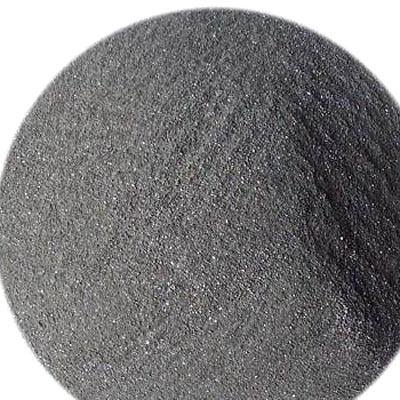Overview of High hardness alloy tungsten carbide surfacing welding wire
Tungsten Carbide (WC) is a hard, brittle, and corrosion-resistant material composed of equal parts tungsten and carbon atoms. It is a popular member of the cemented carbide family, known for its incredible hardness, strength, and thermal stability. Tungsten carbide is often used in industrial applications requiring high wear resistance and the ability to maintain sharp edges, even under extreme conditions.
Features of High hardness alloy tungsten carbide surfacing welding wire
-
Exceptional Hardness: With a Mohs hardness of 9.0 to 9.5, tungsten carbide is one of the hardest materials available, second only to diamond.
-
High Density: Its density ranges from 14.5 to 15.6 g/cm³, providing substantial mass in a small volume, beneficial for applications like balancing and weighting.
-
Thermal Stability: Retains its hardness up to temperatures around 1000°C, making it suitable for high-temperature applications.
-
High Young’s Modulus: Possesses a high modulus of elasticity, indicating stiffness and resistance to deformation under load.
-
Brittleness: Although extremely hard, tungsten carbide is also brittle, requiring careful handling to avoid chipping or fracturing.
-
Chemical Resistance: Resistant to corrosion from most acids except for hydrofluoric acid and strong alkalis, and is not attacked by most organic materials.

(High hardness alloy tungsten carbide surfacing welding wire)
Parameters of High hardness alloy tungsten carbide surfacing welding wire
The parameter for the high hardness alloy tungsten carbide surfacing welding wire is often referred to as the “hardness” value of the material, which ranges from 275 to 300 inches per square inch (inch in mm). This value determines the minimum resistance and load capacity of the wire for specific applications.
The hardness can be measured using a specialized test equipment that uses a diagnostic tool to penetrate through a metal object to measure its density and strength. The thickness of the material at the edge of the probe affects the resistance it has, so it’s important to ensure that the material is hard enough to the recommended temperature range and load capacity of the application.
In general, higher values of hardness represent better performance in many applications where durability, efficiency, and low stress are critical factors. However, this value may not always reflect the actual surface performance of the wire, as the material may have other properties or internal stresses that affect its strength and resistance. It’s always a good idea to refer to specific applications or specifications for the most accurate information about the hardness value of the wire.

(High hardness alloy tungsten carbide surfacing welding wire)
Applications of High hardness alloy tungsten carbide surfacing welding wire
-
Cutting Tools: Used in the manufacture of drills, milling cutters, and other metal-cutting tools due to its hardness and heat resistance.
-
Mining and Construction: For drill bits, saw tips, and wear parts in earthmoving equipment due to its exceptional wear resistance.
-
Jewelry: Provides a durable and scratch-resistant alternative to precious metals in rings and other jewelry items.
-
Ballistic Applications: Used in armor-piercing ammunition and protective plates due to its hardness and density.
-
Dies and Punches: In the forming of other metal parts in stamping and punching operations due to its wear resistance and ability to hold a sharp edge.
-
Oil and Gas Drilling: As components of drill bits and wear parts in drilling equipment due to its toughness and resistance to abrasion.
Company Profile
MyCarbides is a trusted global chemical material supplier & manufacturer with over 12-year-experience in providing super high-quality carbides and relative products.
The company has a professional technical department and Quality Supervision Department, a well-equipped laboratory, and equipped with advanced testing equipment and after-sales customer service center.
If you are looking for high-quality carbide materials and relative products, please feel free to contact us or click on the needed products to send an inquiry.
Payment Methods
L/C, T/T, Western Union, Paypal, Credit Card etc.
Shipment
It could be shipped by sea, by air, or by reveal ASAP as soon as repayment receipt.
FAQs of High hardness alloy tungsten carbide surfacing welding wire
Q: How is High hardness alloy tungsten carbide surfacing welding wire manufactured?
A: High hardness alloy tungsten carbide surfacing welding wire is typically produced by mixing tungsten carbide powder with a binder metal (commonly cobalt), pressing the mixture into shape, and then sintering it at high temperatures to form a solid, tough material.
Q: Is High hardness alloy tungsten carbide surfacing welding wire recyclable?
A: Yes, High hardness alloy tungsten carbide surfacing welding wire is highly recyclable. Scrap and worn-out tungsten carbide tools can be collected, reground, and reused or reprocessed back into tungsten carbide powder.
Q: How does High hardness alloy tungsten carbide surfacing welding wire compare to steel in terms of hardness and toughness?
A: While High hardness alloy tungsten carbide surfacing welding wire is much harder than steel, making it suitable for cutting and drilling harder materials, it is less tough, meaning it is more prone to chipping or breaking under impact compared to steel.
Q: Can High hardness alloy tungsten carbide surfacing welding wire be machined easily?
A: No, due to its extreme hardness, tungsten carbide is very difficult to machine using conventional methods. It often requires specialized grinding or electrical discharge machining (EDM) techniques.
Q: Is High hardness alloy tungsten carbide surfacing welding wire dangerous to health?
A: In its solid form, tungsten carbide is generally safe to handle. However, during grinding or machining, dust containing tungsten carbide and cobalt binder can be released, which can be hazardous if inhaled. Proper protective measures are necessary.

(High hardness alloy tungsten carbide surfacing welding wire)





